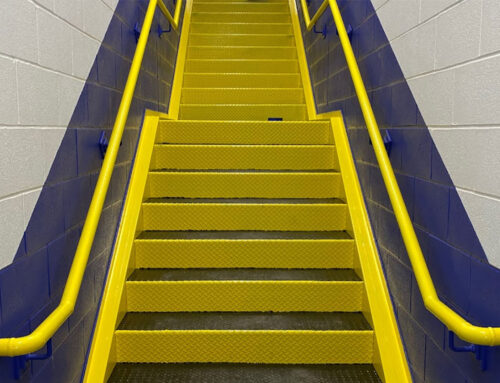What Stripe Coating Is and Why It’s Important
Picture the heat a weld seam endures under sustained pressure. The structurally weakest part of a pipeline, without appropriate coating, will corrode rapidly, intensifying the risk of a leak or collapse.
To treat irregular surfaces, industrial painters apply a stripe coat. This procedure carefully pinpoints edges, crevices, and similarly difficult-to-reach substrates, spraying, brushing, and rolling them with an alloy or plastic-based coating.
Stripe coating is indispensable. It not only delays the onset of corrosion; it helps to maintain the integrity of the primary coating system. Here are the broad strokes of how we approach stripe coating and why it’s necessary in any industrial setting.
How Our Industrial Painters Perform Stripe Coating
Surface preparation is a critical first step. We remove the old coating, thoroughly cleaning the substrate. Any particles of dust, rust, and debris will prohibit stripe coat adhesion.
Our industrial painters determine which type of stripe coat material would be appropriate for the environment the surface is in and the type of substrate. For example, zinc-rich coatings offer excellent cathodic protection for steel surfaces, making them a versatile option for industrial businesses. Vinyl ester coatings provide unmatched protection against solvents and acids, making them a go-to choice for chemical plants.
Once we’ve decided on the coating material, we use a combination of brushes, spray equipment, and rollers to apply the stripe coat. We target irregular surfaces: seams, corners, edges, bolted connections, flanges, mounting hardware, hatches, and elbow pies.
It’s customary for our industrial painters to apply multiple layers of coating and important for the stripe coating to integrate the rest of the primary coating system. Then, we allow the stripe coat to dry and cure.
Why Stripe Coating Is Necessary
Many kinds of irregular surfaces are load-bearing. Over time, corrosion eats away at the substrate and narrows the metal’s thickness. This reduction creates a dangerous domino effect, resulting in mechanical and therefore regulatory failures. Here’s how it unfolds.
The corroded irregular surface weakens the structure’s ability to hold weight, putting an undue burden on the surrounding metal and joints. Cracks propagate. Joints leak. Panels and plates loosen. Seals come undone. It’s nearly impossible to ensure workplace safety and meet compliance standards.
Though these consequences may not always cause a large-scale news-making industrial accident, they almost always cause substrate deterioration and accelerate repair costs. Corrosion spreads like a disease. Once it’s set in, your business can find itself paying for greater and greater substrate repairs.
Stripe coating can mitigate that damage by protecting against corrosion. It lengthens the service life of the entire coating, cutting down on recoating and maintenance needs.
How Our Industrial Painters Approach Stripe Coating
The NACE-certified industrial painters at Eagle Eye Services strongly believe that stripe coating is crucial. We encourage you to schedule a free onsite estimate with our team.
During our visit, we’ll assess the most vulnerable irregular surfaces–the areas currently most impacted by corrosion and the areas that could be impacted in the future. We’ll speak with you about which type of coating our industrial painters would like to apply and give you a timeline for the stripe coating project.
You may also be interested in:
Ready to Get Started?
Have questions about your project or need a quote? We’ve got someone ready to help you.



